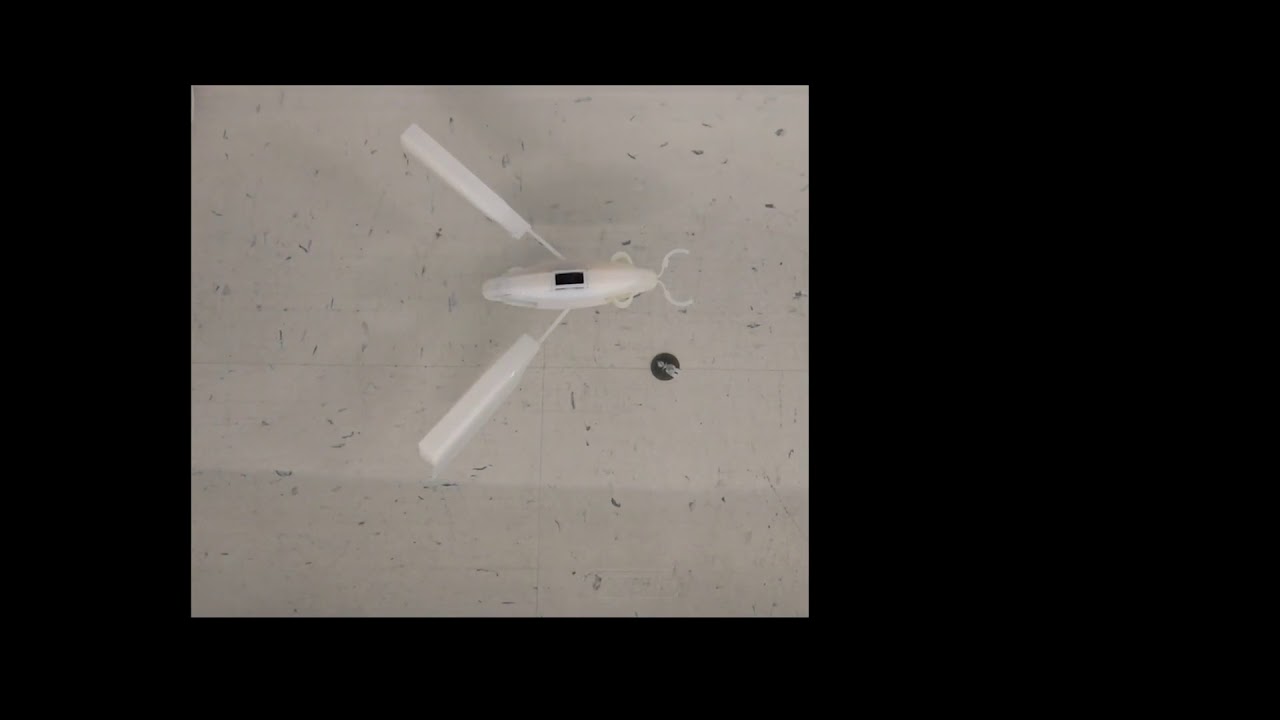Designing an Untethered Soft Robot


A major challenge in soft robotics is the integration of sensing, actuation, control, and propulsion. In most macro-scale robotic systems, propulsion and controls are enabled through a physical tether or complex on-board electronics and batteries. A tether simplifies the design process but limits the range of motion of the robot, while on-board controls and power supplies are heavy and complicate the design process.
Here, we present a simple design principle for an untethered, soft swimming robot with pre-programmed, directional propulsion without a battery or on-board electronics. Locomotion is achieved by using actuators that harness the large displacements of bistable elements triggered by surrounding temperature changes. Powered by shape memory polymer (SMP) muscles, the bistable elements in turn actuate the robot’s fins. Our robots are fabricated using a commercially available 3D printer in a single print. As a proof of principle, we show that these robots can be pre-programmed to follow specific routes or deliver a cargo and navigate back to their deployment point. The proposed design principle can have a broad impact in soft robotics based on programmed materials.


